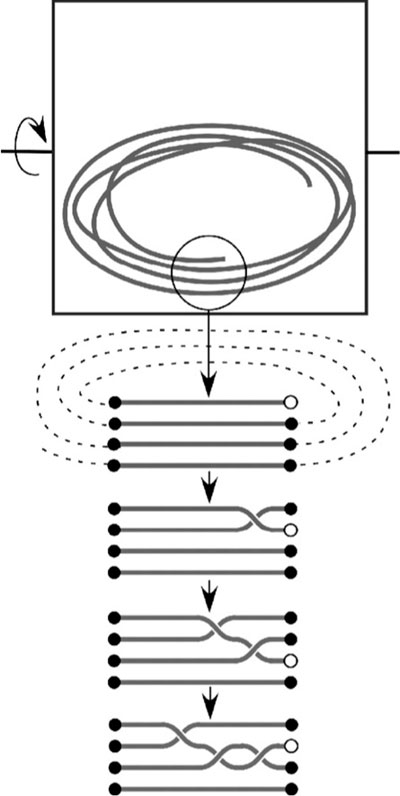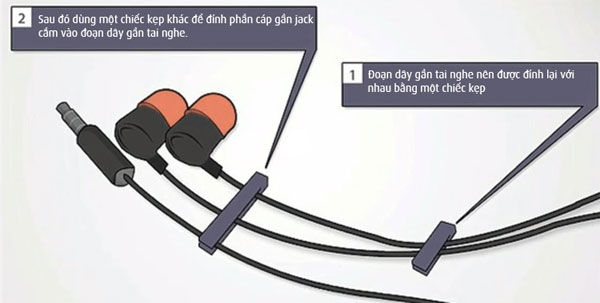Decoding the reason why the headset is always tangled
Tangled headphones are common for most users. This is a pretty annoying incident, even though you have the headset carefully before putting it in the bag, when used, the wires are tangled and tied together. So why is the headset always tangled and how to fix this phenomenon? In a study, scientists at the University of California discovered the principle of knotting and offering solutions to limit the inconvenience.
>>>How to make the headset cord not tangled?

In an experiment in 2007, the researchers put a re-wound wire into a centrifugal camera for 10 seconds to check the knotting of the cord. The experiment was repeated 3000 times with different lengths of the rope. After filming, the image of the rope is inserted into the computer and uses an algorithm to analyze and classify knots. As a result, the researchers formed the knot theory with 14 different types of knots.

The researchers argue that the coil will tend to pull itself out directly by the tip points of the wire. When placed in tight spaces plus the impact of external impulses, the ends of the wires are easily threaded into the coil thereby causing rope tangles and knotting. The longer the string is, the faster the impact of the impulse will be, the faster the knotting will be with the higher ratio because the two ends of the rope will easily creep into the coil. So what is the solution to help the headphones not be tangled when put into the bag?

Scientists suggest a method that should use two clamps . 1 piece of wire clip near the top of 2 headsets together. The other clamps the wire near the jack with two wires near the earpiece. This will limit the wiring points of the wire into the middle when the wire is rolled up, causing tangled wire, even knotting.
However, using these two clamps is quite confusing and time consuming for most users. Hopefully, manufacturers will grasp this principle and come up with a more effective anti-tangle design solution in the future.
- How to make the headset cord not tangled?
- Smart headphones help protect hearing, hear teammates and locate enemies
- Smart headset translates foreign languages at a glance
- Hello, messy hair
- Why is your headphone coil always self-messed up even if it doesn't touch at all?
- Simple way to clean headphones
- Headset translates 40 languages, including Vietnamese
- Remote control system with teeth
- China's quantum satellite transmits tangled photons into Earth for the first time
- Decode cheap DNA
- Why should I plug in a headset to hear the FM radio on my phone?
- Invented a foreign language headset like Doraemon's transliteration bread
 'Fine laughs' - Scary and painful torture in ancient times
'Fine laughs' - Scary and painful torture in ancient times The sequence of numbers 142857 of the Egyptian pyramids is known as the strangest number in the world - Why?
The sequence of numbers 142857 of the Egyptian pyramids is known as the strangest number in the world - Why? History of the iron
History of the iron What is alum?
What is alum?